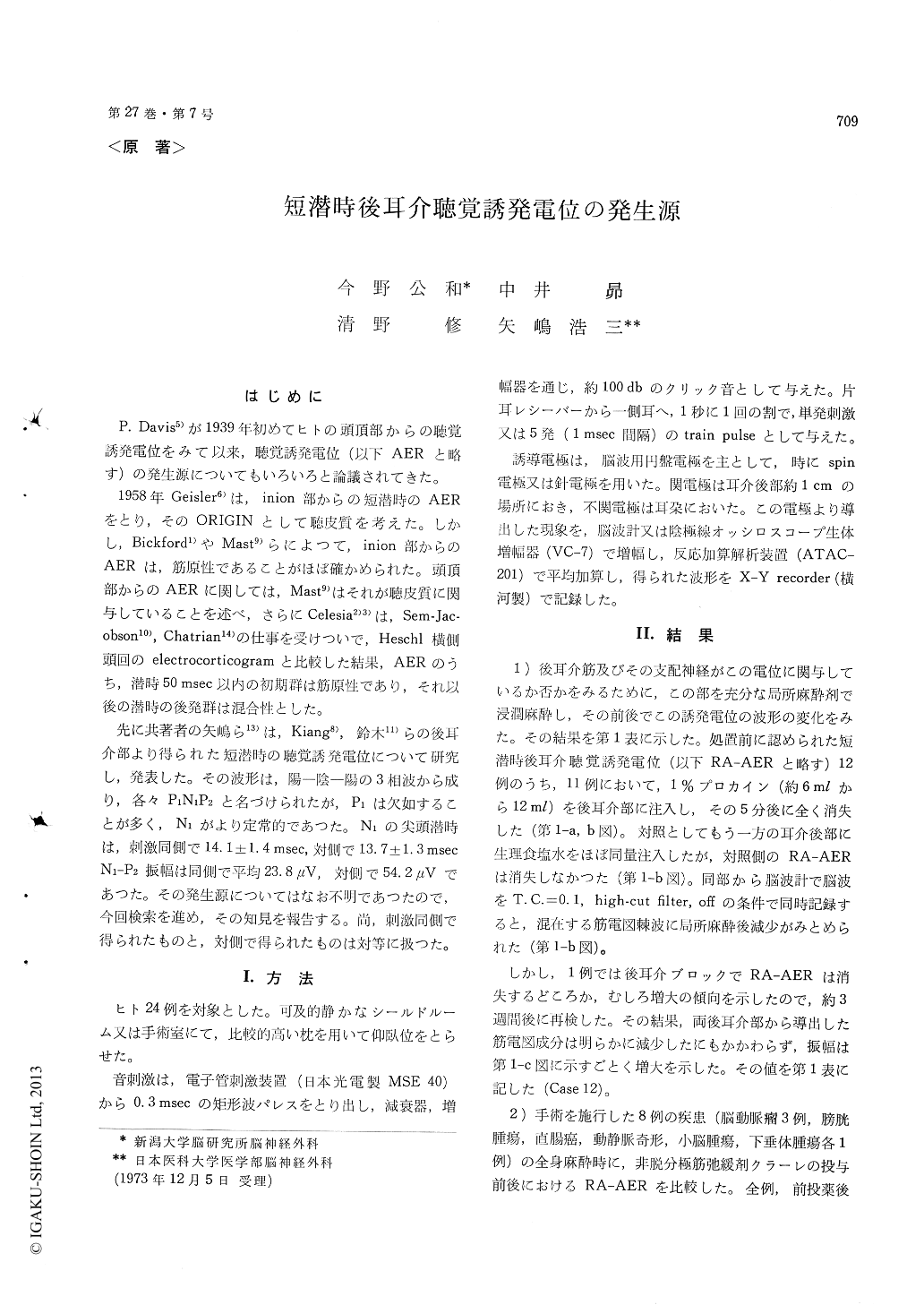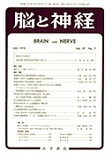Japanese
English
- 有料閲覧
- Abstract 文献概要
- 1ページ目 Look Inside
はじめに
P.Davis5)が1939年初めてヒトの頭頂部からの聴覚誘発電位をみて以来,聴覚誘発電位(以下AERと略す)の発生源についてもいろいろと論議されてきた。
1958年Geisler6)は,inion部からの短潜時のAERをとり,そのORIGINとして聴皮質を考えた。しかし,Bickford1)やMast9)らによつて,inion部からのAERは,筋原性であることがほぼ確かめられた。頭頂部からのAERに関しては,Mast9)はそれが聴皮質に関与していることを述べ,さらにCelesia2)3)は,Sem-Jac—obson10),Chatrian14)の仕事を受けついで,Heschl横側頭回のelectrocorticogramと比較した結果,AERのうち,潜時50msec以内の初期群は筋原性であり,それ以後の潜時の後発群は混合性とした。
This present study was carried out to search theorigin of the short latency, retroauricular evokedresponse to click stimulation in 19 patients and onenormal subject. The responses were averaged byATAC-201.
(1) In 11 of 12 cases, the retroauricular evokedresponses disappeared after local anesthetic blockof the retroauricular branch of the 7 th nerve. Inone case, however, the response still remained afterlocal anesthesia.
(2) The responses were investigated in 8 patientsunder general anesthesia for surgical operation, andcould be recorded in only 4 cases of them underlight general anesthesia (GO). In 3 cases out ofthese 4 cases, the retroauricular evoked responseswere abolished after the intravenous injection ofcurare (dTc) (0.4 mg, 0.8mg and 0.4mg/kg bodyweight, respectively).
In the last case, the response was still recordedafter the curalization probably because of insufficientcuralization (0.2mg/kg).
(3) In one normal subject, who can move pinnavoluntarily, the amplitude of the response in tonicstate of the retroauricular muscle was enhanced10.3 times as large as the amplitude in the reststate.
(4) The responses in the 4 cases with peripheralfocial palsy were not obtained on the paralytic side.
Based on the above results, it is surmised thatthe origin of the response may be myogenic, thoughthe cortical origin of the response may be in noway neglected.

Copyright © 1975, Igaku-Shoin Ltd. All rights reserved.


